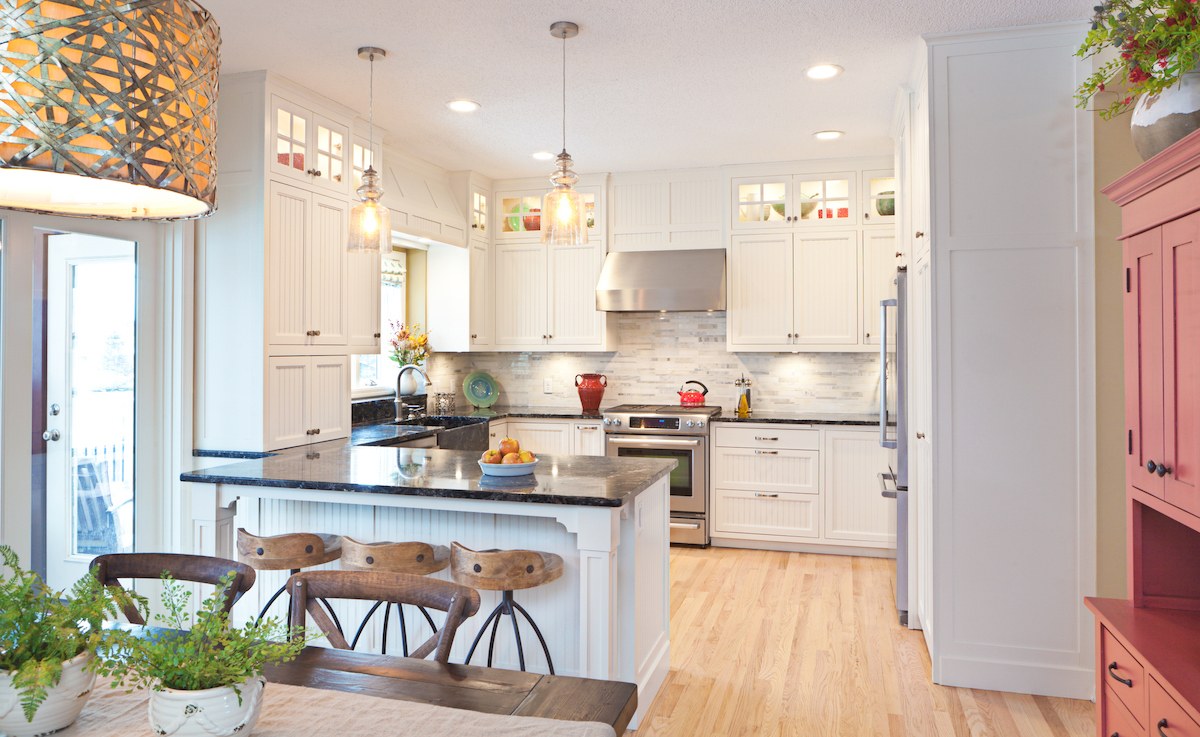Home Selling Tips
The paint colors that can boost your home’s value
Reading Time — 6 minutes
June 25, 2022
By Teresa K Traverse
Reading Time — 6 minutes
June 25, 2022
If you’re planning to list your home on the market, one of the easiest and most cost-effective ways to increase its value is also one of the simplest: paint.
“It’s the least expensive investment for the biggest return,” says Jennie Norris, chairwoman of the International Association of Home Staging Professionals and her own Denver-based home staging business, Sensational Homes.
Painting the interior results in a 107 percent on the return on investment (ROI), and painting the exterior leads to a 55 percent ROI, according to a HomeGain 2012 Top DIY Home Improvements for Seller survey. Painting the interior costs on average $967, and offers a $2,001 increase in value. Painting the exterior cost $1,406 and results in a $2,176 increase in value.
Interior paint – select warm neutral colors
Your home is more likely to sell with a fresh coat of paint, which is the very first thing buyers see.
“You want to have nice, fresh impression for the buyers,” says Norris. “They don’t want to come into a house that looks like it’s been worn hard and is in poor condition.”
Neutral colors make it easier for potential buyers to imagine themselves living there because the paint goes with just about anything. Many buyers also don’t want to shell out extra cash to paint after closing.
The three experts we spoke with all recommended warm neutral colors. Norris suggests using beiges, tans, golds, grays and “greige”—a blend of gray and beige. Avoid white, which is too stark.
Know which rooms to prioritize
“Paint is the simplest, most effective, and most transformative way to change a space,” says Christina Hoffmann, concept manager of HouseLogic.com, a homeownership and buying resource produced by the National Association of Realtors. “The right kind of paint can make a small room look bigger and a cavernous room look smaller,” she adds.
Small rooms can appear larger if you paint them with a lighter or pastel color, says Hoffman. If you paint the trim and the walls the same color, you’re creating an illusion of larger space. If you have a large room that you’d like to appear smaller, try using a warmer or darker color to give the space a cozier feel. Lighter, neutral colors tend to photograph better since they make the room feel brighter.
Hoffman advises prioritizing painting your kitchen, bathrooms, entryways and foyer. Purchase a sample can and paint a swatch of wall or a piece of cardboard that color to check if it works in the space. Observing how natural and artificial light plays on the color can help you narrow down which to use.
Color can also emphasize unique features. A bright white baseboard can pop against a different colored wall. A more colorful nook could create a memorable impression on buyers. Hoffman says those tiny, charming details can make a good impression on potential buyers.
→ Want to skip repairs, showings, and months of uncertainty? Learn how we make selling your home easier.
Paint types matter, too
Paint holds more than just color. Different finishes and sheens can impact how the paint color pops, how easy a wall is to clean, and other factors.
Fallyn Flaherty-Earp, a marketing manager for the Paint Quality Institute, recommends the following when it comes to choosing specific types of paint:
Stick to flat or eggshell sheens on broad walls, as they will not show off the nail pops and unevenness in walls as much as a satin will.
Satins and semi-gloss coats are better for durability and stain resistance.
Use semi-glosses on the trim and doors to make it easier to clean dust and handprints.
Price can be a good indicator of quality level. Spend a few extra dollars on a high-quality paint, or at least something mid-tier. With a cheaper paint, you might have to use more coats, and it won’t go on as smooth.
If you’re painting yourself, purchase high-quality brushes and rollers for an even, flawless finish.
Use eggshell or semi-gloss in the bathrooms where there might be moisture, advises Norris. And don’t forget to paint the trim and ceiling, not just the walls.
Exterior paint – no more than three colors
The exterior of your home is the first thing potential buyers see. Some homes, like those made of brick, won’t require fresh paint. But exteriors like stucco or siding might.
There should be no more than three colors on the exterior of the house, says Norris. She recommends following the 60-30-10 percentage rule: 60 percent is the body of the home, like stucco or brick, 30 percent is the garage doors and trim. The final 10 percent is the front and shutters, with just a pop of color.
Norris says that you don’t want to use too many colors on the exterior. A variety of colors can be distracting and make the house appear choppy or smaller—distracting the buyer’s eye. One of her favorite color schemes is a neutral gray for the body, white for the trim and garages and a front door with a pop of color featuring brown or blue.
When do you need to paint your home’s exterior? When the exterior paint is peeling, chipped or cracked.
“A fresh coat of paint in on-trend colors for a house is always going to look better than a dated color scheme with paint that is peeling, faded and worn,” says Norris. She advises picking neutral colors that will be current in the next five to 10 years. The exceptions are Victorian houses, historic properties and homes in tropical areas where brighter colors are the norm.
A full exterior paint job is best left to the pros, since many homeowners lack the necessary equipment, like ladders, scaffolding, and spray tools.
“Homeowners can definitely freshen up their trim around windows or repaint a garage, or front door, but the body of the house should be done professionally if it was painted before,” says Norris.
Most of the major paint companies create specific paints designed for home exteriors. Those exterior lines typically exclude colors that are less likely to hold up due to weather.
If you’re aiming at increasing the value of your home, a few cans paint can be a wise investment. Choosing the paint colors will not only appeal to the broadest audience possible, but also help future buyers envision themselves living in the space.
This article is meant for informational purposes only and is not intended to be construed as financial, tax, legal, real estate, insurance, or investment advice. Opendoor always encourages you to reach out to an advisor regarding your own situation.


